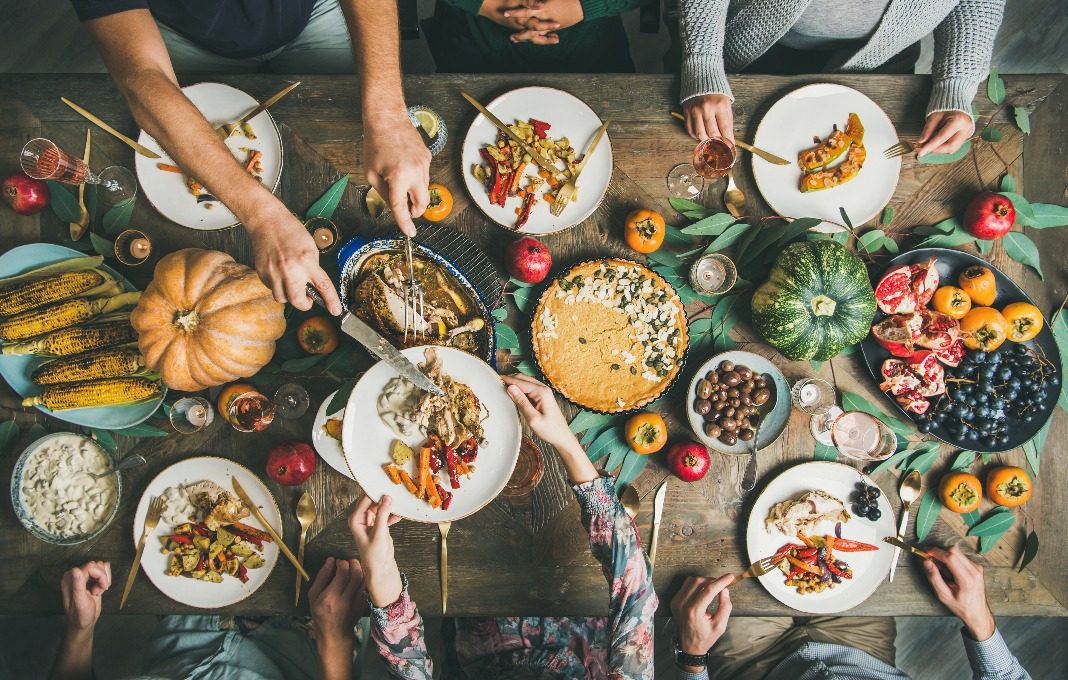This week, in millions of households around the United States, families will gather for a tradition that has withstood the test of time. The Thanksgiving holiday is an annual occasion to celebrate loved ones, create lasting memories, and, last but for many most central, to eat. As we plan our Thanksgiving feasts while, at the same time, our companies are plotting strategy for 2023, it’s helpful to see the parallels between the two.
For example, you have your core business—the turkey, mashed potatoes, stuffing, gravy—the tried-and-true recipes you return to every year and know that everyone will like. Then you add some innovative outliers—Aunt Linda’s pineapple marshmallow sweet potatoes, the vegan chickpea loaf your grad student nephew is bringing or the complicated but fulfilling TuDuckEn. The newcomers are risky—and often met with aversion—but sometimes they stick around and become new annual traditions.
The most innovative companies (and kitchens) know that successful experimentation can’t happen in a vacuum. It takes a village—turkey basters, taste-testers, forgotten cranberry sauce dropped off last minute—or employees at every level contributing ideas, experiences and lessons-learned from the field. Through our work with over 300 companies, we’ve developed the Outthinker Process, a framework that has generated over $2.5 billion in new revenue created and has proven to be a winning recipe for driving innovation success. Whether you’re working on your holiday meal or your intrapreneurial initiatives, try this five-step plan to help you get cooking:
1. Imagine: The original Thanksgiving in 1621 celebrated the Plymouth colonists’ first autumnal harvest. Collectively, we’ve maintained the spirit of gratitude and celebration for the bounty of food and the blessings of family. While you plan the meal, you have in mind a vision for how you want the day to go—is the focus on creating joy among family members or an unforgettable culinary masterpiece? Likewise with innovation efforts, imagine your ultimate goal. What north star will get everyone excited to contribute? What impact to do you want to have?
2. Dissect: In this second phase, take a look at your current “traditions” and break down which traditions are working and which are not. Perhaps last year’s stuffing was too dry or the cranberry sauce too sweet—but we tend to keep repeating recipes because they have become tradition. In the company, we similarly fall into mindless repetition because this the way we have always done it. What traditions should you innovate or rethink entirely?
3. Expand: Then it’s time to consider your potential options. In our workshops, participants usually come up with around two hundred ideas for what their strategic options might be. Consider the elements of your business model: Positioning, Product, Promotion, Price, Place (distribution), Physical Experience, Processes and People. Just as holiday meal planning might consider menu, location, guests, table arrangements, music, timing or cooking systems, these leverage points will give you an idea of where you might focus to come up with something new and delighting. Like a deep-fried turkey draws from Southern cuisine, you might look to an entirely different industry for innovative ideas. Or you could combine “ingredients” (employees and teams) in a new way. Could you invite someone who may not have family nearby or join forces with a relative to host (a joint venture)? Are any pumpkin shortages or other supply chain disruptions likely to impact you this year? List all options that come to mind, and include as many as you can.
4. Analyze: In this next step, analyze your options. There might be some crazy ideas (inviting Cousin Jim who’s been living off the grid in Wyoming?!) or some obvious winning moves (getting early leadership buy-in to spread your innovation message.) Which of them are most likely to bring you further towards your goal? You might minimize your time in the kitchen by asking everyone to bring their own dish. Similarly, one company I worked with held an “innovation tournament,” asking employees to enter any of their experimental ideas that had taken hold in the past year. Participants submitted videos and winners received a financial reward to further their You might focus the conversation on a new cranberry sauce recipe instead of Uncle Simon’s views on immigration reform.
5. Sell: When it comes to Thanksgiving or organization-wide innovation, neither will work unless you invite others along for the ride. “Sell” is actually woven into every stage of the innovation undertaking. Leave too many people out of the cooking process and you might end up serving cold turkey or crunchy dinner rolls, trying to convince your family that they still taste good. Set up your innovation teams in isolation, and they might be viewed as outsiders trying to force unwelcome change. Early on, get your guests or your employees pumped up about a new dish or new technology, ask what they want to see at the table, invite them to share their ideas for what would improve their experience—the more others feel like they have a part in the planning, the more willing they will be to jump in and help.
This year, at your table and in your organization, instead of routinely following tradition, try something new. It doesn’t have to mean changing everything (going 100 percent vegan, say), but rather thinking about the experience you want to create for your family or customer, choosing some areas to innovate (recipes, music, location), brainstorming lots of options, selecting a few and getting your family members (or employees, board members or investors) on board so they are excited and included.
And of course, the Thanksgiving tradition would not have been around as long as it has without a sense of celebration and a hearty serving of gratitude. We can apply those same learnings in our organizations—instead of shutting down employee experiments because they seem too risky or threatening to the status quo, listen with gratitude. These are the ideas and ingredients that change tradition for the better. Of course, agree upon timelines and measures of success, but even if an experiment fails, celebrate the learnings acquired. By continuing to imagine, dissect, expand, analyze and sell, you’ll find yourself with the recipe for innovation for years to come.









